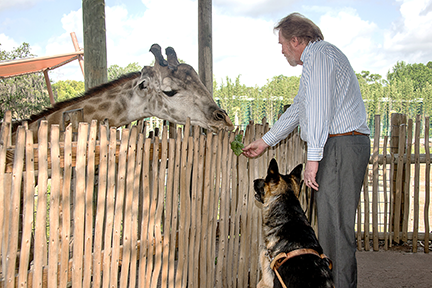Media and Press
 For several years, members of the National Federation of the Blind who use guide dogs have been sharing challenges they have faced accessing the nation’s zoos. In 2013, we created a special task force to research service animal policies among zoos and found policies that ranged from extremely restrictive to very permissive. Those with restrictive policies asserted it was based upon concerns for the health and safety of both the animals on exhibit and of the service dog. We questioned the veracity of these assertions, wondering why it was unsafe for one facility and not for others.
For several years, members of the National Federation of the Blind who use guide dogs have been sharing challenges they have faced accessing the nation’s zoos. In 2013, we created a special task force to research service animal policies among zoos and found policies that ranged from extremely restrictive to very permissive. Those with restrictive policies asserted it was based upon concerns for the health and safety of both the animals on exhibit and of the service dog. We questioned the veracity of these assertions, wondering why it was unsafe for one facility and not for others.
Upon completing our research, we contacted the Association of Zoos and aquariums (AZA), the largest accrediting body in the industry and began a dialogue with Steve Olson, AZA’s Senior Vice President of Governmental Affairs. Steve was very cooperative and concerned about the discrepancy and took a keen interest in our issue. Steve truly wanted to make an impact on this issue so that everyone would be able to benefit from the educational opportunities AZA members provide. Steve joined us for our 2013 annual meeting at the convention of the National Federation of the Blind, listened to our concerns and experiences, and vowed to help us solve the problems.
True to his word, Steve left the convention and contacted Zoo Tampa at Lowry Park (formerly Lowry Park Zoo) in Tampa, Florida, one of their member organizations and set up a meeting between their management staff and NAGDU’s president, Marion Gwizdala, who lives in Tampa. During this meeting, Lowery Park zoo examined their policies concerning service animals and listened to suggestions about how their policies could be better.
Over the next several months, Lowry Park Zoo conducted several visits between local members of the National Federation of the Blind and puppy raisers from Guide Dog Foundation’s Suncoast Puppy Raisers designed to systematically desensitize the zoo animals to the presence of dogs. At the beginning of the process, the zoo had twelve restricted areas, one of which was the giraffe feeding station. By the end of the process, only one area remained restricted – The Wallaby Walkabout in which visitors have direct contact with animals in a petting corral. Here is a picture of President Marion Gwizdala and his German Shepherd guide dog, Sarge, on the giraffe feeding platform.
In order to share their experience with other AZA and encourage them to implement the same sort of desensitization for other zoos, Lowry Park Zoo created a video program about the success of their program and its benefits for both the animal collection and those who use service animals. Thank you to Dr. Larry Killmar, Senior Vice President of Animal Science and Conservation for Zoo Tampa at Lowry Park, and The McCune Family Foundation for their generous financial support of this program.
